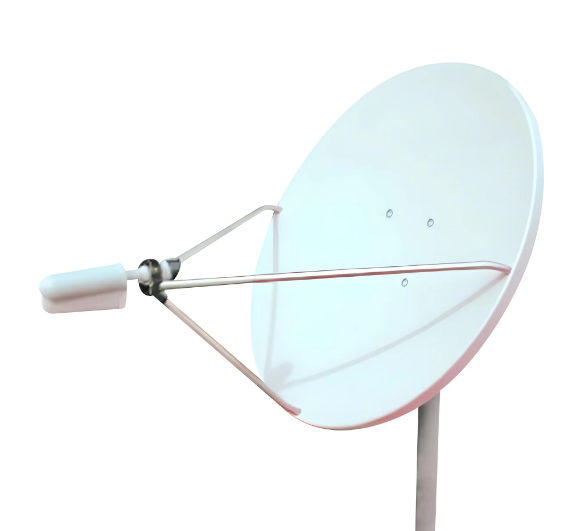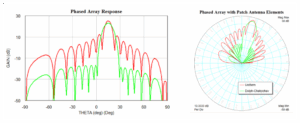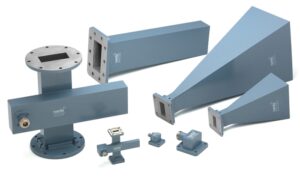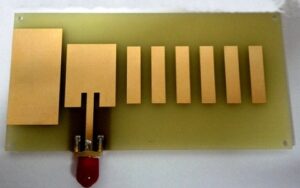Table of Contents
How Antennas Receive and Transmit Signals
An antenna is a crucial component in communication systems as it converts electrical signals into electromagnetic waves and vice versa. It comprises of an electrical conductor through which alternating current flows to create electromagnetic fields that extend into space away from the conductor as radio waves.
Functions of Antennas
They function on the principle of radiation. As such, when transmitting, the antennas accept input electrical signals from a transmitter and convert them into electromagnetic wave before emit it to the environment. During reception, these antennas take up returning electromagnetic waves, convert them back into electrical signals, and transfer them to the receiver. Therefore, they play a dual role that makes them a critical element in wireless communication.
The efficiency level varies considerably, depending on the design and material of antennas. For instance, an ordinary dipole antenna carries an efficiency level of approximately 80%. Hence, only 80% of the electrical power input is radiated out as an electromagnetic wave. On the other hand, high-performance elements like those used in broadcasting can reach up to 95%.
Transmission Power and Signal Range
Transmission power determines the range an antenna can cover. High power levels produce a stronger signal that covers an extensive range. Hence, a local FM transmitting power ion level of about 100,000 watts can reach areas within 100 kilometers of the station . However, cell phone antenna transmission levels are lower and ranged at about 20 watts, which only covers a few kilometers.
Material and Design
Copper and aluminum are the common materials used in antenna due to their high level of conductivity, weight, and cost factors . Some elements are uniquely designed to serve specific purposes and resonate at a fixed frequency. Their size is also engineered to fit the medium being transmitted. For example, satellite dish antennas are parabolic in shape, and the satellite dish is usually larger, measuring 2 to 3 meters in diameter . Their specific design helps in focusing weak and scarce signals from the satellite into a more massive area for higher quality reception.
The lifespan also varies, as outdoor antennas have to contend with harsher weather conditions. As such, the durability range is limited to between 10 and 15 years on average. The cost of any antenna is dependent on its size, complexity of design, and the material used in its manufacture. Indoor antennas used for the TV cost as low as $30 while large antennas for satellite circuits can cost as much as $500 to over $1,000. The speed at which antennas emit signals when transmitting is almost at the speed of light, which is 300,000 kilometers per second. Hence, any message communicated through this medium is within the same timeframe for vast distances. A TV master can be hundreds of kilometers away, but a TV set will access the signal from the antenna almost immediately, often within microseconds.
How Satellites Receive and Transmit Signals
Satellites are signal receivers in space and at the same time transmitters of signals into space. They are used to create global communication systems, data transfer systems, and navigation systems. Satellites have a custom transmitter and receiver called a transponder that consists of a gain antenna, a low-noise input amplifier, a frequency converter, and a power amplifier . Major components of satellite transponders are the same. Notably, transponders are used to receive signals from earth stations, amplify the received signals, convert their frequency, and transmit them back to the earth. Any signal passing through a transponder is in the microwave band of the electromagnetic spectrum. The signal from the earth’s ground station is transmitted to the satellite through uplink signal or forward link. The transponder is also responsible for the transponding process, in which an uplink signal is rerouted to one of the downlink beams of the satellite.
The received signal from the earth is weak and has a low power output, which is the signal level required by the satellite to amplify it for its task. The receiver power output is a critical parameter that ultimately determines the efficiency of any communication system . Satellites use transponders whose power output ranges from a few to 500 watts, depending on the type of service they offer. Modern communication satellites operate one or more transponders to serve a wide range of customer needs.
The satellite’s signal range on earth depends on its output and the satellite transponders used. Geostationary satellites have an orbit of 35,786 kilometers above the surface of the earth, which covers a third of earth’s surface area. As such, they can serve the entire area of broadcast or communication station. On the other hand, communication efficiency is associated with the satellite’s ability to handle signals with minimum attenuation. The introduction of digital signal processing compensates for the use of signals within the available antenna power and transmission range. For efficient use of available power, the accepted signal quality level may differ in different satellites. Modulation several advanced systems like 256-QAM changes the effective throughput and data rate of communication lines. Additionally, satellites are constructed to be durable and robust to withstand harsh space conditions . The life span may not be the same for all satellites, with many such as communications satellites having life spans of up to 5 to 15 years. The construction and launch of a satellite are costly.
Conclusion
Satellites are built to withstand harsh space conditions. They consist of a transponder, which is an integrated receiver and transmitter. Major components of the satellite transponders are the same. The tool is used to amplify weak received earth signals, transmit the back earth signals, and change them in frequency. The satellites’ communication range on earth depends on the satellite output and the transponder used. Advances in satellite technology include the increased life span, addition of more transponders, and efficient signal handling.
Role of Antennas in Ground Communication
Antennas are one of the key components of many types of ground communication systems as they are the units that allow to connect the waves in the air with the electronics on the ground. These systems can be found in radio and television broadcasting, mobile networks, and emergency services. Antennas allow for the transmission or receiving of signals across distances, without the need for physical connections. Therefore, antennas used for ground communication differ in type and application depending on design specifics, intended frequency, and power.
Types and Uses of Ground Communication Antennas
Different types of antennas are designed to serve various applications depending primarily on whether they are sending messages uniformly or in one direction. Omnidirectional antennas send messages uniformly and constantly irradiate across all horizontal directions. This type of design is commonly used for message broadcasting, for example, in radio systems, as well as cellular networks where coverage of wide areas is required. The power of this type does not exceed 100 watts, which in the context of radiation describes the area of a large city.
Directional antennas are used for other types of applications, due to the unidirectional emission of radio waves. The emission can be equal in intensity, but directional design allows the signal to reach further in one direction; therefore this type is useful for point-to-point terrestrial microwave links, satellite ground applications, and others. The power of this type of antennas can reach 1,000 watts and more for a range of >100 km transmissions.
Performance and Efficiency
The antenna efficiency determines the number of watts entering the system and finally irradiated by antennas as electromagnetic waves. The portion of power lost in irradiation as heat across various types of ground antennas can vary immensely due to design specifics. In cellular mobile communication, for instance, the quality of service is determined not only by good network coverage but also by the percentage of antenna power going to transmission.
Material and Construction
Metal material, such as aluminum or copper, is an ideal material for building ground antennas. These materials are adequately conductive, long-lasting, and generally stable. The exact design of the antennas is determined by the exact frequencies they are made to support and the conditions of their installation. If antennas are placed near the beach, for example, where the salty air can rust metal, additional construction or material is used to decelerate the process. The cost of antennas can vary immensely across their sizes and design. For instance, a television set can function with a $20 antenna while a cellular network with highly-performing antenna may cost several thousand dollars. Can the cost of an antenna influence its construction quality and therefore lifespan? Another question in the context of maintenance would be about the lifespan of antennas. Antennas are generally made with long-term use in mind; however, without regular insulation examinations and physical maintenance, their lifespan can be only around 10-20 years.
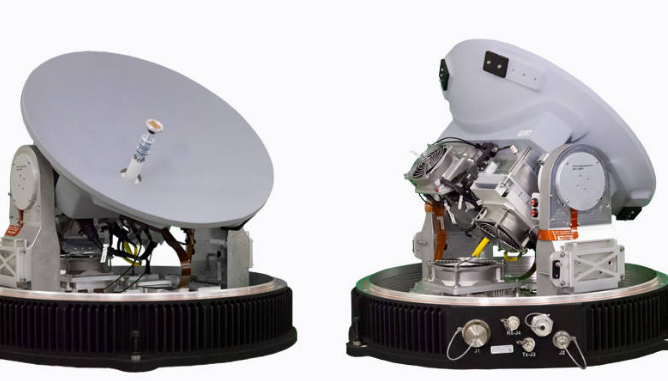
Role of Satellites in Space Communication
Satellites are a critical component of modern space communication, allowing signals to be transmitted between a sender and receiver thousands of miles apart. Television broadcasts, internet connections, and GPS systems are just a few examples of the services rendered by satellites in the area. The satellites perform a variety of vital functions in order to complete these actions.
The Performance of a Communication Satellite
Communication satellites perform the vital task of being a relay station for a signal, meaning that it will receive a signal at a specific point on Earth, replicate it, and then transmit it to another location on the planet . This is necessary for satellites to provide a global coverage, because some places may be unreachable by cable due to geographic or economic restrictions . Some satellites are positioned in Clarke orbits match the Earth’s rotation, meaning they remain in the same position relative to the planet at all times . These geostationary satellites are ideal for television networks or continuous monitoring of the weather. Geostationary satellites travel at a “height of 35,786 kilometers above the equator, covering nearly one-third of the Earth’s surface” . For example, an American geostationary satellite can provide coverage to a large portion of the Americas, while another can cover Africa or the Indian Ocean.
Types of Satellites
Satellite technology has improved substantially over the past several decades, as newer satellites use high-throughput technology. This is the work and the oc, as once the satellite is in orbit, it can transmit data back and forth at rates many miles above. Modern satellites also are more effective, as traditional ones would have a throughput of 1 gigabit per second . However, modern satellites can have a throughput exceeding the 100 gbps mark . As a result of that efficiency, a large amount of data would be able to be communicated. For example, internet service demands the utmost speed and quality from its signal. As a consequence of improvements in internet accessibility, wireless satellites are a cost-effective option. With efficiency gains being achieved through advances in solar paneling and digital processing systems, the only costs remaining are the expenses for developing the satellite and the operational costs for staff in the ground stations.
Costs and Operational Issues
It is critical that the satellite be efficiently utilised through the use of expendable hardware, as the satellite is useless once its operations cease. The lowest cost of a satellite is usually around $50 million, but the most expensive may be even more than $400 million . The cost of launch may be two times as expensive at $50 million-200 million additionally. The components of the satellites are not all that durable, meaning the average satellite has to be replaced every 10-15 years . The speed of communication for all of these alternatives varies depending on the type of operation. Given that the speed of light, operation can occur in a timely manner despite the distances. The speed of communication could also play a role in ensuring that certain processes are undertaken in a rapid manner. Live broadcasts are a good example, because a signal must be transmitted from a camera source in another part of the world to the reception tower. Live international broadcasts for a global organization, for example, would have delays up to eight minutes . If a certain operation is delayed for even five seconds, however, the process would get spoiled randomly.


